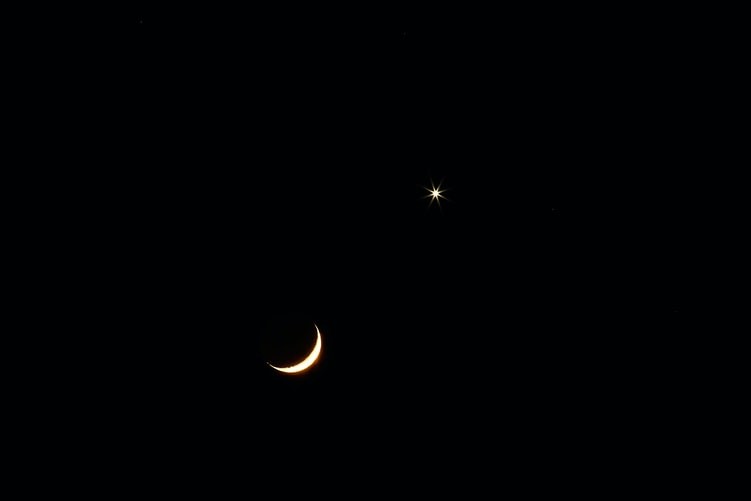Venus puts on a spectacular show for early birds on Friday, July 10 as it has established itself as a dazzling morning star emerging into view from beyond the east-northeast horizon soon after 3:15 am.
Last month, on June 3, Venus transitions from an evening to a morning star--known as its inferior conjunction. Now it's going away from that line and speeding ahead of the Earth in its faster orbit, so it will display as a large, brilliant and beautiful crescent that waxes in a phase the whole month while decreasing in size.

After inferior conjunction, experts have observed that Venus has been easier to sight as it moves farther away from the sun and rapidly leaps upward into high dawn brilliance.
Venus at its brightest
On the morning of Friday, July 10, Venus will come up in total darkness while shining at its brightest at a brilliancy magnitude of 4.7.
Venus appears to shine most brilliantly when it is in its crescent phase, unlike Mercury, when its peak brilliance is when it's in its full phase. That is because Venus is far from Earth and its disk looks relatively small when it appears full as seen on Earth.
On the other hand, when Venus is closer to Earth, its disk looks larger in apparent size, but in its crescent form it does not reflect as much sunlight to Earth as would it would be if it's in its full phase. To determine Venus's greatest brilliancy, the astronomers have come up with a compromise on the geometry of the sun's illumination angle on Venus' disk versus its distance from Earth.
It comes when Venus appears to be in 25% illuminated crescent 41 million miles distance from Earth, its maximum illuminated extent.
According to the Astronomical Society of Canada's "Observer's Handbook 2020," that moment will come on July 10 at 4 am EDT (8:00GMT).
By that time, Venus will be 21 times brighter than Sirius, the brightest of all stars. It will be so bright that it can even be seen on very clear days with the naked eye after sunrise. Anyone who will try to track its movements will be able to see it as a tiny white "speck" against the blue sky.
Now is the time to use those telescopes or even binoculars to examine Venus. For binoculars, even just bracing them against the tree can make a difference. But some people claim that they can see the crescent of Venus with their naked eye. The best time to do that is 15 to 30 minutes before sunrise.
Venus from mid-July to September
Venus will be seen near the constellation Taurus, the bull on three consecutive mornings on July 11, 12, and 13. It is located just 1 degree from the bright star Aldebaran during these three mornings.
By July 17, it will face east about an hour before sunrise and forms a stretched-out isosceles triangle with the Moon and Aldebaran. Venus marks the vertex angle, while the Moon and Aldebaran mark the base angles.
In August, Venus will rise at one and a half hour to two hours before twilight and sparkles at the eastern sky at dawn, and continues to rise higher each week. Then by August 12, Perseid watchers will see Venus at its greatest elongation, 46 degrees from the sun.
Venus will continue to shine into September as it dominates the night sky. It will be located one-third of the way up in the eastern sky by the middle of the morning twilight and will be a bit higher in September compared to August.












